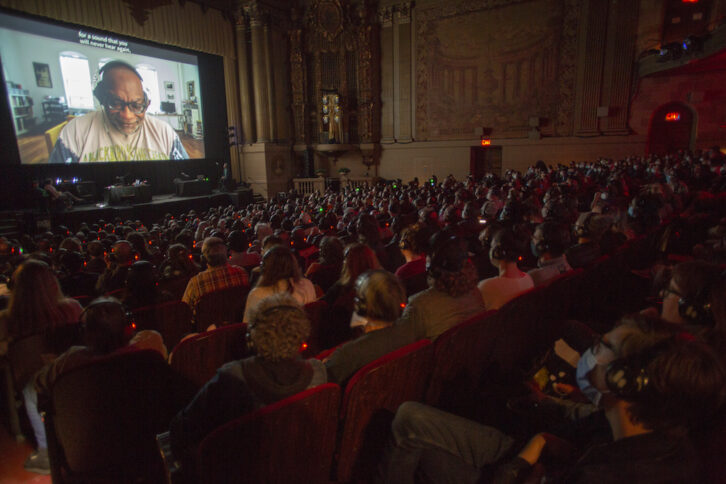
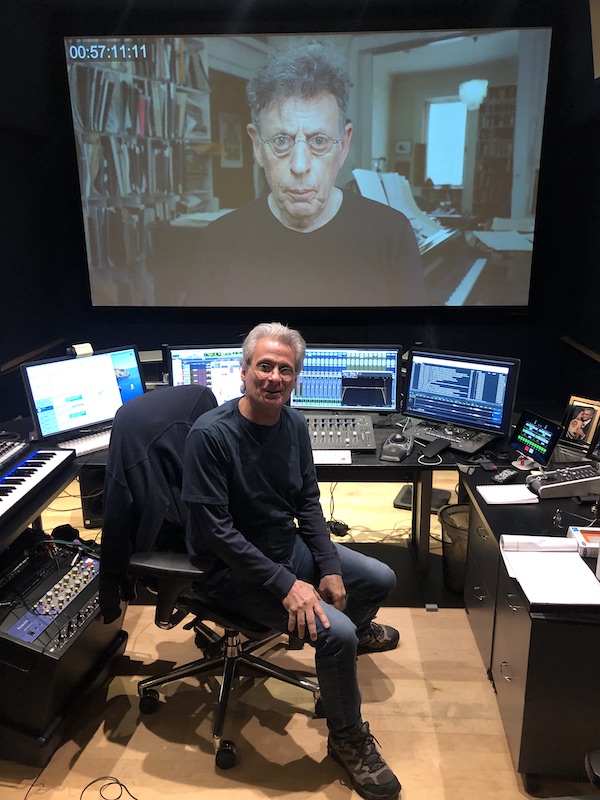
When requested, “What’s your favourite sound?” Sam Green, the Oscar-nominated documentary filmmaker who not too long ago created the immersive ode to audio, 32 Sounds, replied, “I like the sound of water. I discover it’s an endlessly fascinating sound. And it’s one of many inspirations for the film.”
32 Sounds is an exploration of the phenomenon of sound. It describes what sound is bodily and offers a quick historical past of recording and sound copy. It additionally demonstrates sound’s “energy to bend time, cross borders and profoundly form our notion of the world round us,” in keeping with the movie’s synopsis. 32 Sounds premiered on the 2022 Sundance Film Festival as an immersive, binaural expertise offered to audiences over headphones, supported by stay parts akin to narration by the director and an unique music efficiency by JD Samson.
Inspiration for the movie struck Green as he was studying a e-book about composer Pauline Oliveros. It talked about her lifelong buddy, Annea Lockwood, who had been recording the sounds of rivers for greater than 50 years. “Annea made a number of albums from these recordings,” he says. “One is named A Sound Map of the Danube, and there’s A Sound Map of the Hudson River and A Sound Map of the Housatonic River. I used to be utterly intrigued.”
In 32 Sounds, Green meets up with Lockwood, who’s on a recording expedition to Constitution Marsh, alongside the Hudson River north of New York City. She units up her Sound Devices 702 digital recorder and drops a hydrophone within the water. In the movie, she says, “I’m listening to an entire different world down there… The play of the currents underwater are scrumptious and take advantage of lovely sounds. They have beautiful phrasing. They’re musical.”
It’s such a important listening and outré interested by sound that Green seeks to current in his movie, which is worried extra with the act of really listening than it’s in regards to the precise sounds within the movie. While engaged on a earlier documentary about Kronos Quartet, Green discovered that “it was a giant problem to get folks to hear in an engaged manner. Most of the time if you watch films, you hear in a really passive manner. With the Kronos Quartet, in the event you simply half-listen, it’s fairly good, however in the event you actually hear, it’s outstanding. I attempted very laborious with that movie to get folks to hear, and that received me pondering quite a bit about sound.”
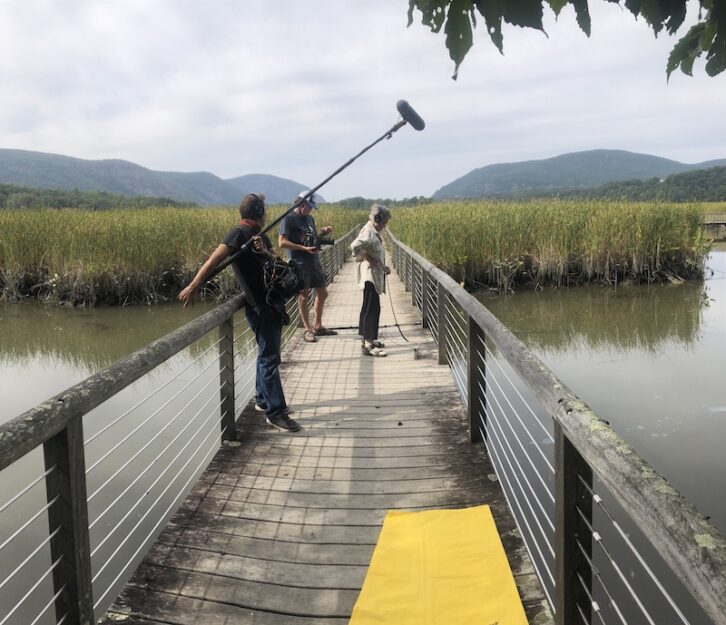
TAKING TIME FOR SOUND
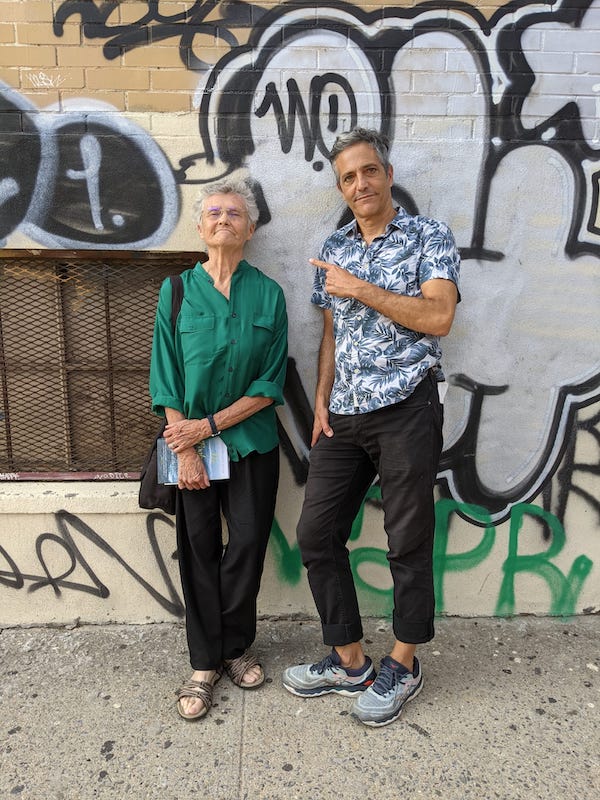
Green is usually a really deliberate filmmaker; he maps out an thought and has a transparent sense of the story he desires to inform, however 32 Sounds was completely different in that it was a means of discovery. He stuffed his inventive nicely from sources just like the British Library Sound Archive, the Voyager Golden Record and even containers of outdated cassette tapes from his closet.
“I didn’t know the place this concept was going, and I feel that may be highly effective and might result in highly effective issues,” he explains. “There’s that cliché in regards to the sculptor with a giant outdated slab of marble and the way they permit the sculpture to emerge from it. It’s a corny thought, however it was true with this movie greater than any movie I’ve made. I’m truly happy with the method and the place it led. It’s not what I’d’ve imagined at first once I thought, ‘I’ll make a film known as 32 Sounds.’”
The director’s journey into sound led to a collaboration with two-time Oscar-winning sound designer Mark Mangini. “There are so many people who find themselves good about sound—from film sound to sound artwork to composers to lecturers and sound research,” Green says. “I talked to so many various folks from many various disciplines, and Mark is somebody who is absolutely good about sound. He’s so considerate and joyful about his work, and so I shortly glommed onto him as somebody to speak to and ask questions.”
Mangini began as a sound advisor on 32 Sounds, serving to Green determine technical facets, like using binaural sound and having it play again correctly for audiences. Green says, “Years in the past, I noticed a one-man Broadway play known as The Encounter carried out by Simon McBurney. He was on stage with a dummy-head microphone and everybody within the viewers was carrying headphones. I bear in mind being dazzled by the impact of him whispering in your left ear and whispering in your proper ear. I used to be very taken with the impact of binaural sound—the way it can work and the spatial high quality of it. I questioned easy methods to incorporate that into this film, and Mark was super-helpful.”
Mangini spent greater than a yr speaking with Green as he was researching, filming, writing and exploring the subject of sound and the way it’s perceived.
“It was a two-year dialog, and I didn’t edit, document and even combine any sound that complete time,” Mangini remembers. “Sam needed me to wax poetic on what I thought of sound, how I hear, and what I thought of his sonic targets—to assume philosophically and to debate sound as narrative and never make any sounds, though I did do this later.”
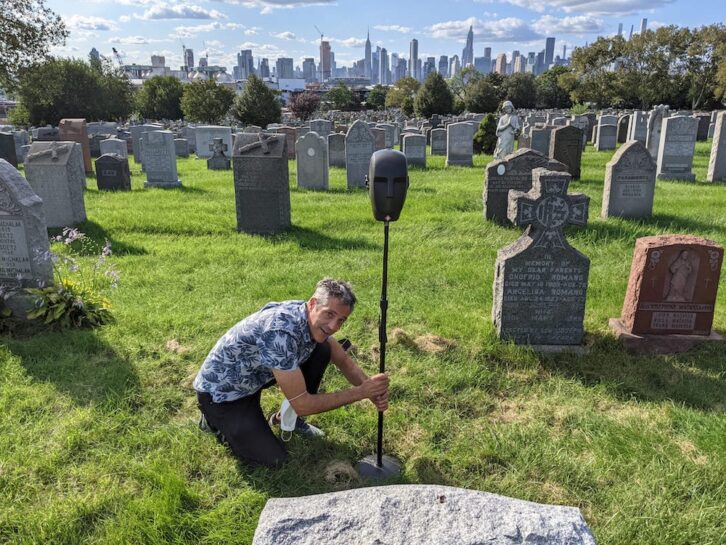
START WITH LISTENING
32 Sounds isn’t your typical documentary that’s combined in stereo, 5.1 or Dolby Atmos codecs and supposed to play by means of cinema (or dwelling) audio system. It’s really meant for headphones.
“We constructed and combined three variations for distribution,” Mangini explains. “A headphone-only combine (big selection) for streaming and on-line consumption; a headphone-only combine with bass augmentation to be used in stay theaters the place we broadcast to headphones by way of a wi-fi, non-compressed, FM-based transmission system augmented by stay parts; and we did a 7.1 theatrical combine.”
Because headphones can’t totally reproduce bass or sub-bass frequencies under 80 Hz, Mangini really helpful including a subwoofer to the audio playback system to complement the headphone combine for the stay occasions.
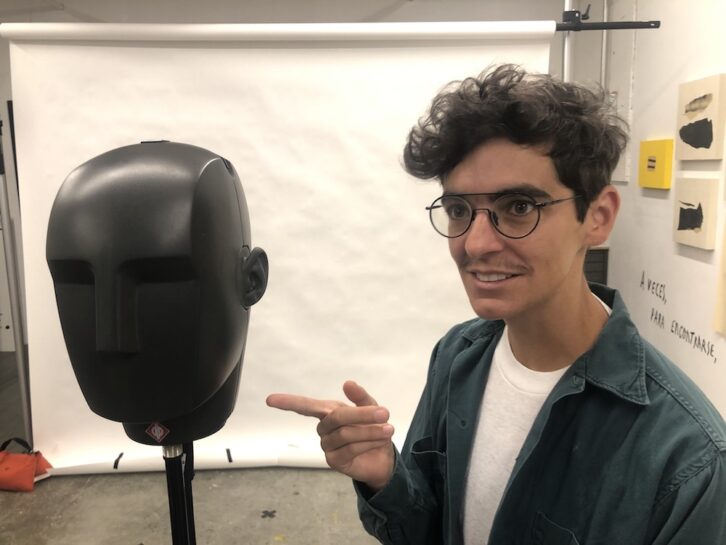
“I used to be involved that the listener wouldn’t get the good thing about the complete audio spectrum with out it,” Mangini explains. “I inspired Sam and the staff to construct the stay efficiency with the power to breed these frequencies in order that the viewers would have a really full and full audio expertise. This technical session was actually vital in crafting the sonic expertise of 32 Sounds.”
Specific sequences—akin to physicist Dr. Edgar Choueiri rattling a matchbox—lend themselves completely to binaural recording and playback by way of headphones, because the acoustics of the house during which the matchbox was recorded provides a way of dimension and depth. As the rattling matches get farther from the binaural mics within the dummy head, the sound of the house itself turns into extra noticeable—simply as you’d anticipate to listen to in the event you had been sitting within the room as Dr. Choueiri walked round shaking a field of matches. Listening to the movie with eyes closed, apparently somebody is shaking a field of matches subsequent to your left ear, then behind your head after which close to the ground in your proper aspect.
This impact could be tough to breed with a 5.1 combine performed again by means of wall-mounted theater audio system, as they might be too far-off from the listener to generate the identical sense of proximity delivered by a binaural recording heard by means of headphones. So for the 7.1 theatrical combine, sure sounds (just like the matchbox) had been re-recorded.
Green reveals: “Mark had this concept to document the matchbox in mono in order that we may transfer it across the theater within the combine. Also, we should always document it with a way of proximity that matches the footage. Mark recommended going again to Foley artist Joanna Fang, who’s featured within the movie, and asking her to re-record these sounds in Foley to make them translate within the 7.1 combine.”
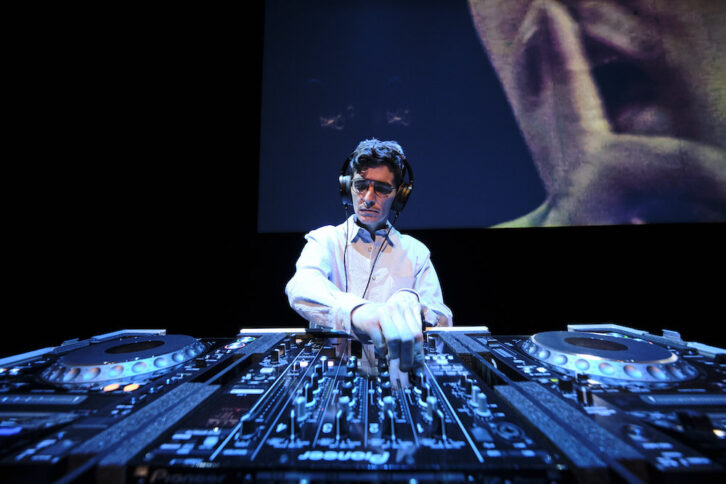
Mangini panned the mono parts across the 7.1 encompass discipline to match the motion on-screen, and he used the Stratus 3D multichannel reverb from Exponential Audio to generate natural-sounding reflections to emulate the expertise of the binaural recordings in a manner that will translate in a 7.1 theatrical atmosphere.
In one other scene, Dr. Choueiri used the binaural dummy head to document his younger son laughing and working across the yard. Making this sequence work within the 7.1 combine was a lot trickier as a result of Dr. Choueiri’s son was 4 years older than when the recording was first captured, so ADR wasn’t an possibility. To make it work, Mangini used one aspect of the binaural recording as a mono ingredient that he may pan appropriately. Then he used the alternative aspect of the binaural recording to generate an immersive set of reflections by dropping its quantity -10 dB and processing it with multichannel out of doors reverb and delay by means of The Cargo Cult’s Slapper plug-in. The addition of physique actions and Foley footsteps in grass additional aided the phantasm.
“I knew the top aim was some model of actuality,” Mangini notes. “It’s a sound second; we’re displaying off how spatial audio might be and the way we’re not conscious of it except we’re advised to hearken to it, so we would have liked to take these measures to make it really feel as plausible as potential. I knew it could by no means be as compelling because the binaural recording, however it’s distinctive and enjoyable in its personal manner.”
A TRUE SOUND EXPERIENCE
This was Mangini’s first time designing a 2-channel binaural monitor and mixing solely over headphones—no audio system to be discovered. He says: “For 46 years, I’ve been working in conventional cinema sound, listening to planar speaker reproductions, so I felt manner out of my consolation zone. I needed to rethink the way in which that I hear. Sam and I spent per week and a half collectively in my studio at Formosa Group with our headphones on the complete time. It turned out to be actually enjoyable and academic. I received to train new muscular tissues in that course of.”
It was additionally difficult in that the theatrical combine Mangini made in California wasn’t taking part in again correctly throughout Green’s combine overview at a theater in New York City. After speaking to the theater’s projectionist, Mangini found that the Dolby Fader, which controls the amount that the theater viewers hears, was turned down to five as an alternative of being set at the usual stage of seven (85 dB).
“That’s 6 dB under reference stage,” Mangini says. “The projectionist was very forthcoming, saying that is the start line for them in the way in which most movies are performed as a result of that is what makes audiences most snug. And so we had that philosophical dialogue: ‘Who are we mixing movies for? Is it the cinema? Is it the general public?’
“Cinemas have been turning down the amount of films as a result of they’re too loud,” he continues, “so we make the mixes louder, making the cinemas flip the mixes down even additional, and so we make them even louder. We don’t know what a typical quantity ought to be for a theatrical launch as a result of theaters are turning the amount down.”
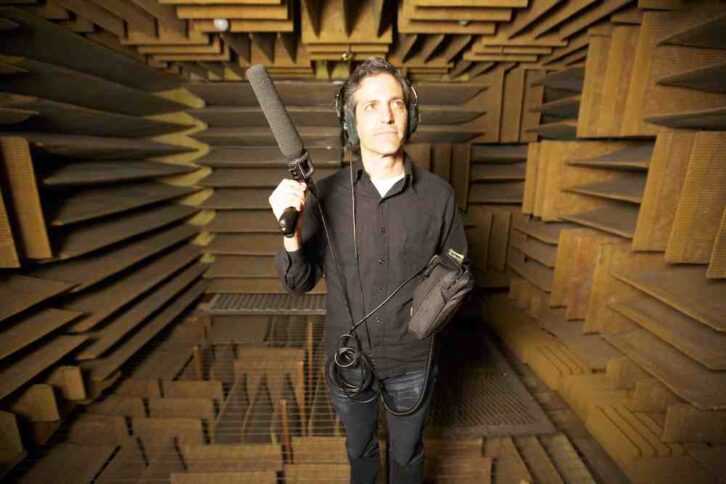
In the top, Green and Mangini determined to go along with the usual cinema ranges of 85 dB SPL, C-weighted, performed at Dolby Fader 7, “as a result of that’s what he desires the viewers to listen to,” says Mangini. In an effort to have theater audiences hear the movie as supposed, Green plans to incorporate detailed directions on setting quantity ranges to theaters—an strategy that various high-profile Hollywood administrators take.
32 Sounds is greater than only a documentary movie about sound—at instances, it even turns into interactive. In one sequence, Green incorporates a five-minute dance interlude and the viewers is invited to stand up and dance round as a result of sound isn’t simply one thing you hear; it’s one thing you are feeling, particularly when sub-bass frequencies are concerned. As Green notes in his movie, “Sound not solely goes in your ears, however hits your entire physique if it’s low sufficient.”
In one other sequence, he exhibits Pauline Oliveros’ Tuning Meditation (1971), carried out and recorded in New York City on January 20, 2017. In this “meditation,” a room stuffed with individuals are instructed to “inhale deeply; exhale on the observe of your selection; hearken to the sounds round you, and match your subsequent observe to considered one of them; in your subsequent breath, make an observation nobody else is making; repeat.”
Sound isn’t only a bodily feeling; it stimulates an emotional response, as nicely. In 32 Sounds, Foley artist Fang talks about how sound can bridge the hole between the visible and the sense of feeling the sound, in addition to listening to it. In the movie, she says, “Art can elevate a fact past what’s feasibly there, and if we pull it off proper, hopefully the emotional expertise of listening to it and being part of it is sufficient to make you totally settle for the poetry of what you’re listening to. We’re making an attempt to take what we really feel on the within, and have [the audience] really feel the identical manner we do.”
Green toured with a number of stay exhibits of 32 Sounds all through California in March and early April. The 7.1 theatrical model is scheduled to open nationwide on April 28 with a screening at New York City’s Film Forum (distribution by Abramorama).
For those that do enterprise out to see the movie, Mangini hopes that they stroll away with the conclusion “that sound—typically thought-about a secondary sense—isn’t given sufficient thought. It may encourage folks to hear somewhat extra typically and somewhat extra critically. Sound informs a lot of the selections that we make consciously and subconsciously every single day.”
